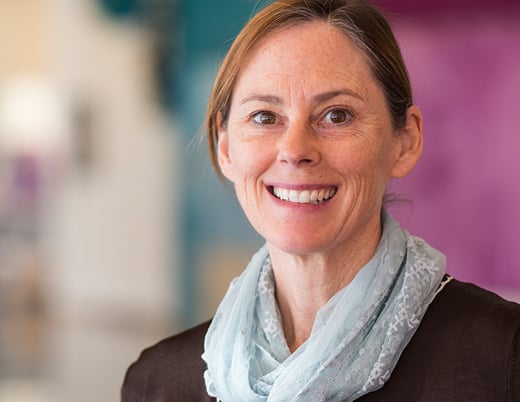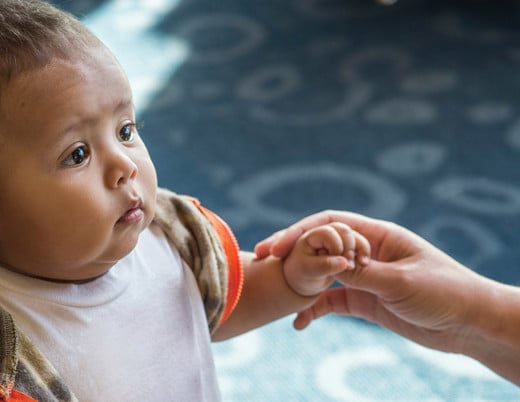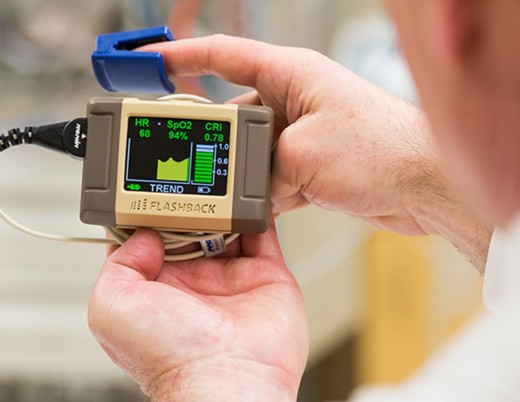How does the largest volume living-donor pediatric liver transplant center in the country optimize patient outcomes?
Too many children die while waiting for a liver transplant. In the United States, about one in 10 infants and one in 20 older children die while on the liver transplant waiting list — and 40% of children who make it to transplant spend over a year on the waitlist. As the largest volume center for pediatric living-donor liver transplants (LDLTs) in the country, the multidisciplinary team at Children’s Hospital Colorado is positioned to ensure all children have access to life-saving liver transplants.
Since the very first liver transplant in the world was performed at the University of Colorado in 1963, deceased donor liver transplants (DDLTs) have represented the most common donor type for treating a range of conditions, including biliary atresia, acute liver failure and end-stage liver disease. But as the available pool of suitable pediatric deceased donors has decreased over time, LDLTs have emerged as an excellent option for meeting the demand for size-matched grafts in children.
Importance of high-volume pediatric liver transplant hospitals
While the impact of LDLT center volume on the waiting list and post-transplant outcomes has been demonstrated in the adult population, little was known about how LDLTs affect the pediatric population.
In a retrospective review of 6,744 children listed for liver transplantation and 5,101 pediatric liver transplants performed in the U.S. between 2009 and 2019, Children’s Colorado researchers, including Dor Yoeli, MD, and Megan Adams, MD, found that increasing access and listing at multiple centers, including high-volume centers with expertise in LDLTs and DDLTs, could optimize waiting lists and post-transplant outcomes. In another study, researchers found that only 41% of candidates listed at a low-volume center reached liver transplantation, whereas 85% of those listed at a high-volume center were transplanted.
“While these findings were expected based on what we’ve seen in the adult population, they provide further evidence of the benefits of offering LDLTs,” Dr. Adams says. “While we still depend on DDLTs, living donors are making up the difference and helping meet the demand for pediatric liver transplants.”
Emergence of LDLTs in Colorado
Children’s Colorado offers a range of technical variant grafts, including whole liver, split-liver and segmental, and the emergence of LDLTs has significantly reduced time on the waiting list, down to just two months, while increasing the number of transplants performed each year.
What started as an altruistic gesture to give a child a second chance at life, has turned into a movement. In 2017, an anonymous non-directed donor offered a portion of their liver to the University of Colorado Hospital, which they offered first to pediatric patients on the waiting list at Children’s Colorado. Under the leadership of Elizabeth Pomfret, MD, and Michael Wachs, MD, of Children’s Colorado, the pediatric LDLT program continued to grow with great outcomes for both recipients and donors. The total number of transplants for all donor types grew to 20 lifesaving transplants performed in 2021 — the most since the program’s inception in 1990. For the last several years, Children’s Colorado has performed more than half of liver transplants from living donors — the majority of those from anonymous non-directed donors.
Traditionally, Pediatric End-Stage Liver Disease scores are used for prioritizing children on the waiting list for liver transplants, meaning their disease must progress and make them really sick before they can get a liver transplant. But LDLT allows recipients to get a liver transplant before they get to that stage of disease severity — leading to a quicker timeline to transplant, faster recoveries and better post-transplant outcomes.
“Offering LDLTs allows recipients to bypass the uncertainty of being on a waiting list and receive a transplant before they get too sick,” says Dor Yoeli, MD, “and the introduction of non-directed living donors expands the benefits to children on waiting lists who might not have a suitable directed live donor with a healthy liver and matching blood type.”
Interest in becoming a donor has also gone viral. Just a few years ago, a 4-year-old girl in Colorado received a liver transplant from an altruistic stranger after her parents posted on Facebook seeking a donor. Her story of receiving a donation from a complete stranger went viral, leading to five new non-directed liver donors.
 Benefits of LDLTs
Benefits of LDLTs
Live donor transplants are a win-win-win for patients, doctors and donors. They offer familiarity and a clearer view of the donor’s liver quality and more control over the surgery timeline. For donors, donating to a child means less liver volume needs to be removed — as children only need a small part of the liver for it to regenerate to its full size. Waiting times at Children’s Colorado are less than half the national average. Also, recipients of LDLTs are 42% less likely to die and 44% less likely to experience graft loss at one-year post-transplant.
Expanding access to pediatric liver transplants
As Children’s Colorado works to meet the demand for pediatric liver transplants in Colorado and regionally, Drs. Yoeli and Adams expect the program to expand nationally where patients experience more competition for liver transplants or don’t have access to LDLT-capable centers.
“There’s also an added value of multiple listing,” says Dr. Adams, “where patients are evaluated in Colorado and return home to wait for the first-available transplant — increasing their chances of receiving a transplant sooner.” Multiple listing means being listed at a patient’s local primary liver center, but also listing at Children’s Colorado to also explore the possibility of living donation.
While other barriers exist, including far travel distances for treatment or a lack of awareness of the possibility to have a live-donor liver transplant, Children’s Colorado and its multidisciplinary team of experts are well-positioned to advance the care for some of the most complex cases in the U.S.
“The benefits of LDLTs at high-volume centers are clear,” says Dr. Yoeli, “but it’s also worth exploring policies or programs that can help expand access to this lifesaving option and being thoughtful about addressing existing health disparities, rather than propagating them.”
Featured Researchers

Megan Adams, MD
Pediatric Transplant Hepatology and Transplant Nephrology
Children’s Hospital Colorado
Associate Fellowship Director





 720-777-0123
720-777-0123










